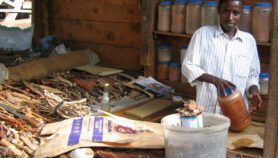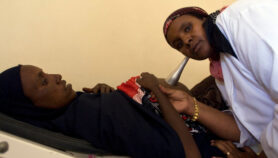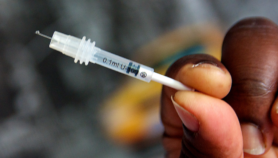By: Christine Ottery
Send to a friend
The details you provide on this page will not be used to send unsolicited email, and will not be sold to a 3rd party. See privacy policy.
Since the roll-out of antiretroviral therapy (ART) almost ten years ago, drug-resistant HIV has increased significantly in parts of Sub-Saharan Africa, researchers have found.
In a study published in The Lancet yesterday (23 July), researchers call for urgent action to improve surveillance of the prevalence of resistance to ART, through undertaking population-based surveys of HIV-positive people.
"Surveillance programmes need to be incorporated into treatment programmes because it is very important to understand resistance trends and, therefore, to inform strategy of whether we need to change regimens," lead author Ravindra Gupta, a researcher at University College London, in the United Kingdom, told SciDev.Net.
The study used data relating to over 26,000 HIV-positive people in Asia, Latin America and Sub-Saharan Africa.
Governments in Sub-Saharan African began rolling out ARTs in 2002, with Botswana being the first to launch a national treatment programme in January that year. Since then, countries across the region have developed similar national treatment programmes.
But researchers from Nigeria, Switzerland, the United Kingdom and the United States have identified a significant rise in ART resistance in regions of Sub-Saharan Africa over the past decade.
In East Africa, for example, eight years after ART roll-out ART resistance had reached 7.4 per cent, and resistance is now increasing by 29 per cent every year. In Southern Africa the incidence of drug resistance six years after roll-out was three per cent, and is increasing by 14 per cent each year.
The researchers attributed the increase in ART resistance mainly to resistance to non-nucleoside reverse transcriptase inhibitors (NNRTI), agents used in ART that block the reproductive capabilities of the virus by binding to part of the HIV virus. After failed treatment with NNRTIs, a genetic mutation of the part of the virus that the NNRTI binds to can easily occur — and even a single mutation can confer high-level resistance in patients.
The researchers say that there are several barriers to increasing the capacity of surveillance programmes, including high costs.
Gupta told SciDev.Net: "More money would be great, but using money from existing programmes would obviously mean less drugs for people, so that is an issue.
"On the other hand, we estimated costs of these surveillance programmes to be quite small in comparison to [the costs of] treating people for life with ARTs."
WHO underfunding is also a challenge, said Gupta: "The WHO has labs queuing up to be accredited but does not have the capacity to give accreditation itself. It would be good if each country had its own lab to do specialised testing."
Alison Grant, an HIV expert and professor of international health at the London School of Hygiene and Tropical Medicine, said that solutions are being developed to make it easier to test resistance in rural communities: "For example, using spots of blood dried on filter paper, which can be stored and transported to central laboratories for testing."
"We need to find a way to make it [surveillance] happen, so that the extraordinary success of ART roll-out is sustained," she said.













